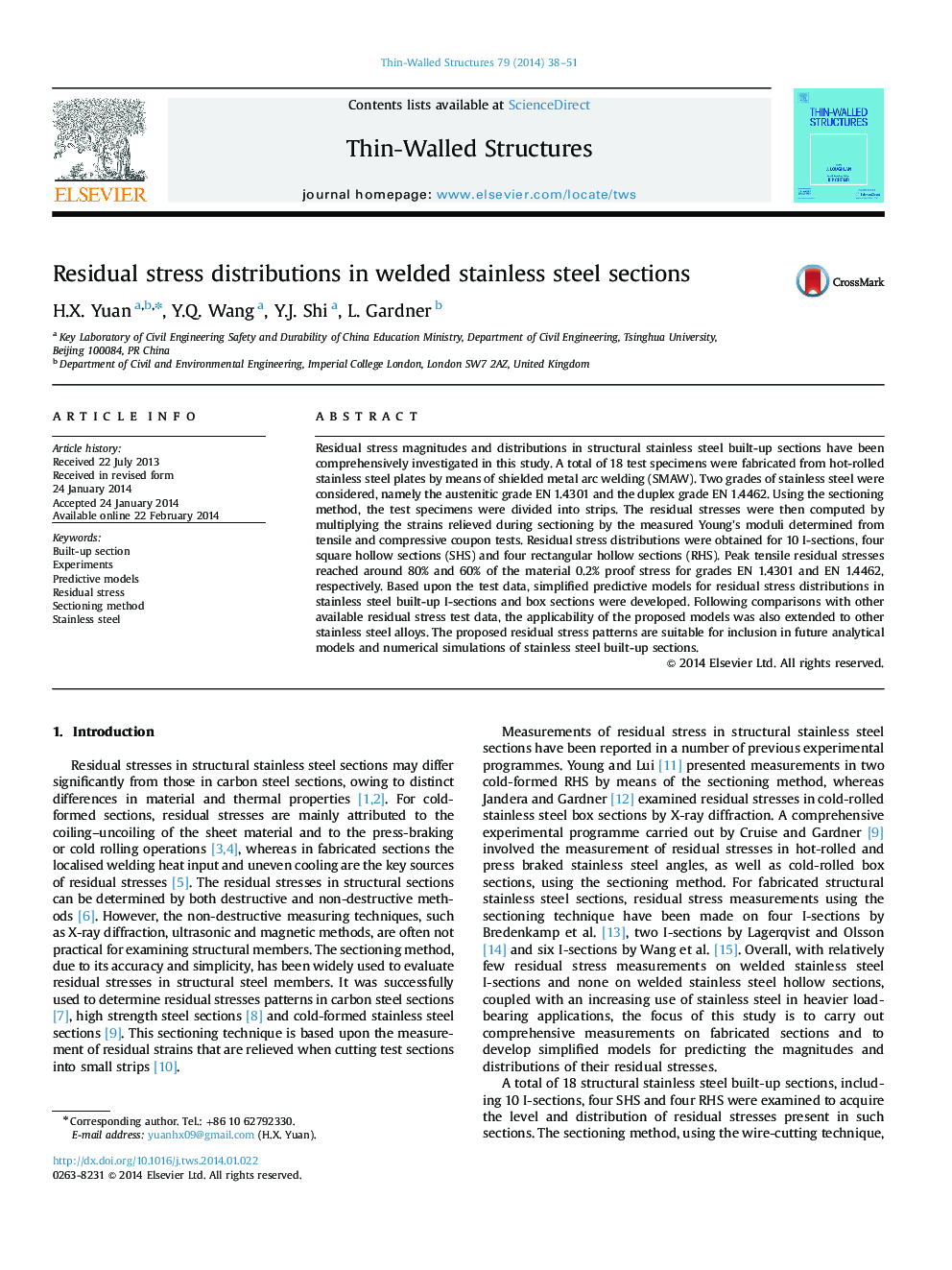| Article ID | Journal | Published Year | Pages | File Type |
|---|---|---|---|---|
| 308979 | Thin-Walled Structures | 2014 | 14 Pages |
•Residual stress measurement tests on 18 welded stainless steel sections.•Lower peak tensile residual stress values but wider transition regions than carbon steel sections are observed.•New predictive models for determining the residual stress distributions are proposed.•Extending the proposed models to other stainless steel alloys.
Residual stress magnitudes and distributions in structural stainless steel built-up sections have been comprehensively investigated in this study. A total of 18 test specimens were fabricated from hot-rolled stainless steel plates by means of shielded metal arc welding (SMAW). Two grades of stainless steel were considered, namely the austenitic grade EN 1.4301 and the duplex grade EN 1.4462. Using the sectioning method, the test specimens were divided into strips. The residual stresses were then computed by multiplying the strains relieved during sectioning by the measured Young׳s moduli determined from tensile and compressive coupon tests. Residual stress distributions were obtained for 10 I-sections, four square hollow sections (SHS) and four rectangular hollow sections (RHS). Peak tensile residual stresses reached around 80% and 60% of the material 0.2% proof stress for grades EN 1.4301 and EN 1.4462, respectively. Based upon the test data, simplified predictive models for residual stress distributions in stainless steel built-up I-sections and box sections were developed. Following comparisons with other available residual stress test data, the applicability of the proposed models was also extended to other stainless steel alloys. The proposed residual stress patterns are suitable for inclusion in future analytical models and numerical simulations of stainless steel built-up sections.
